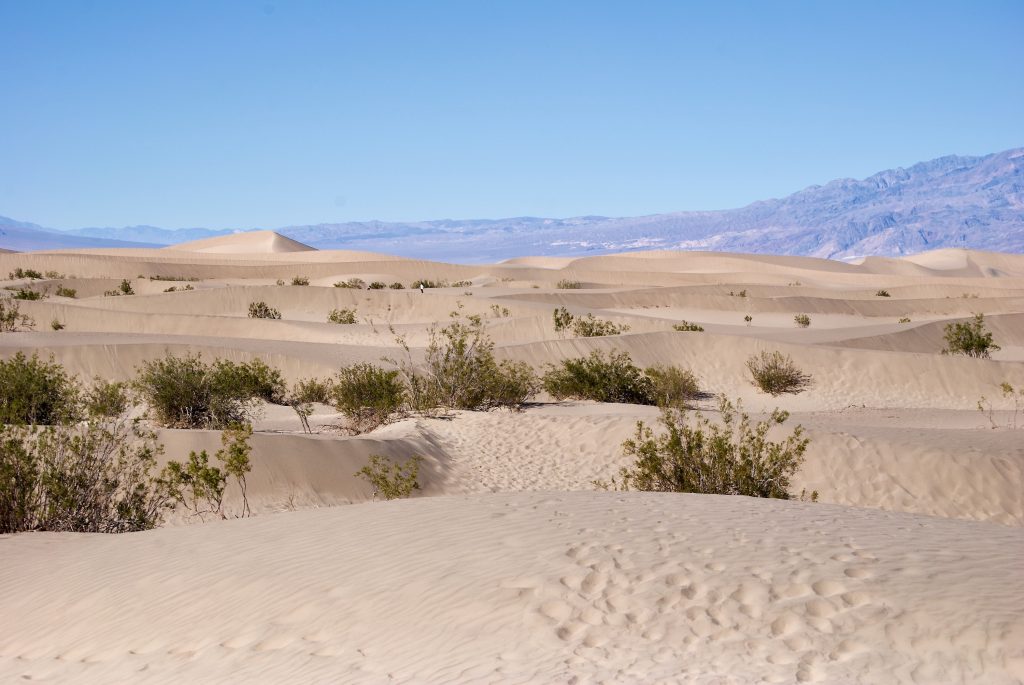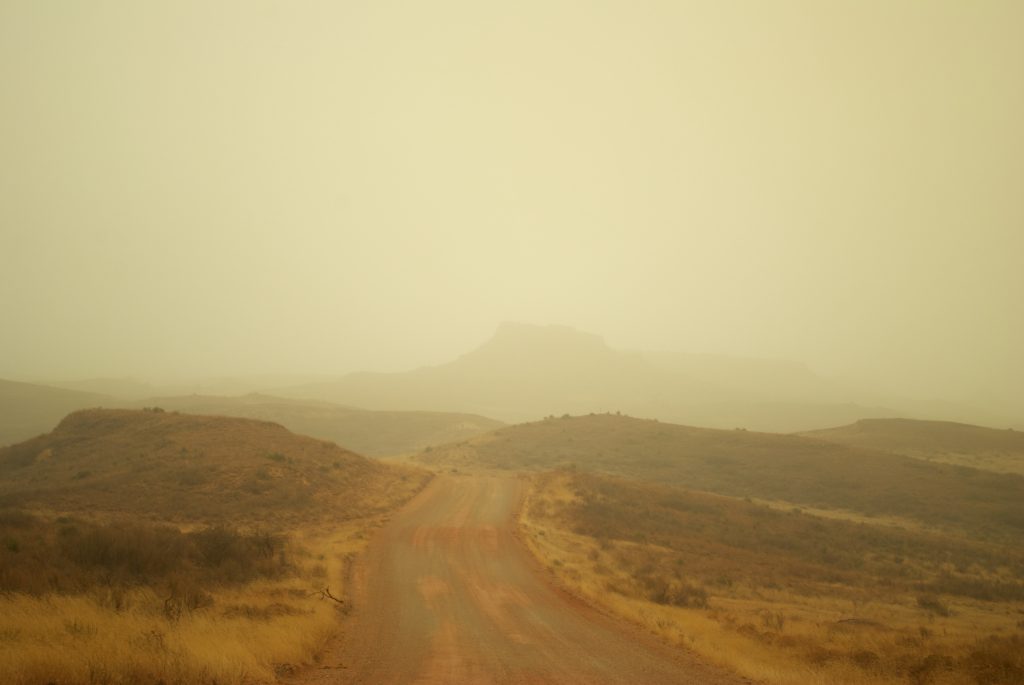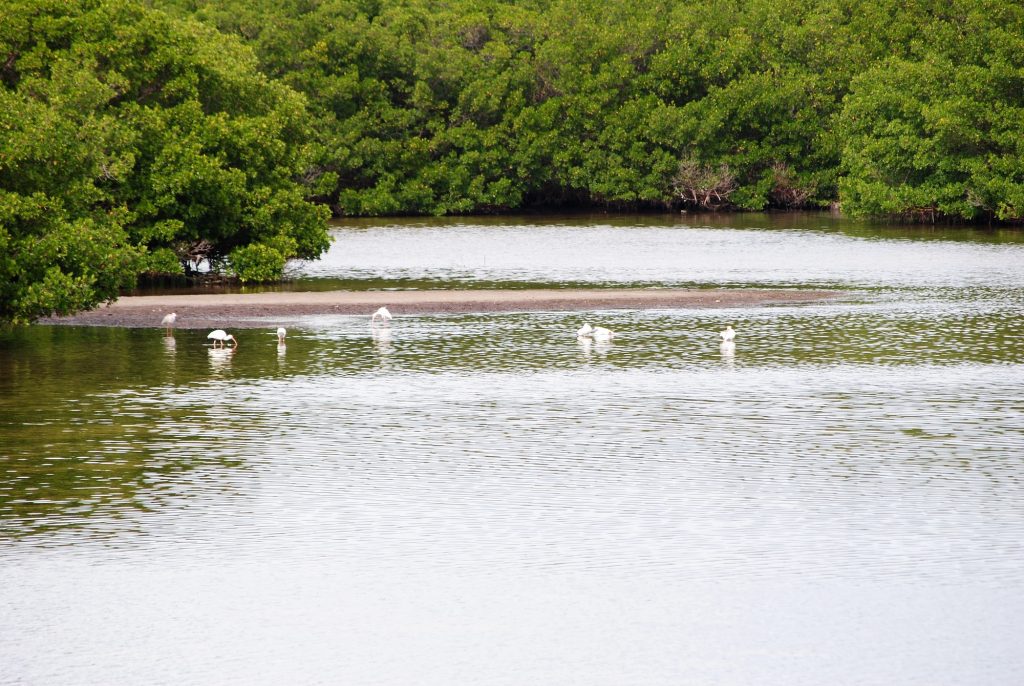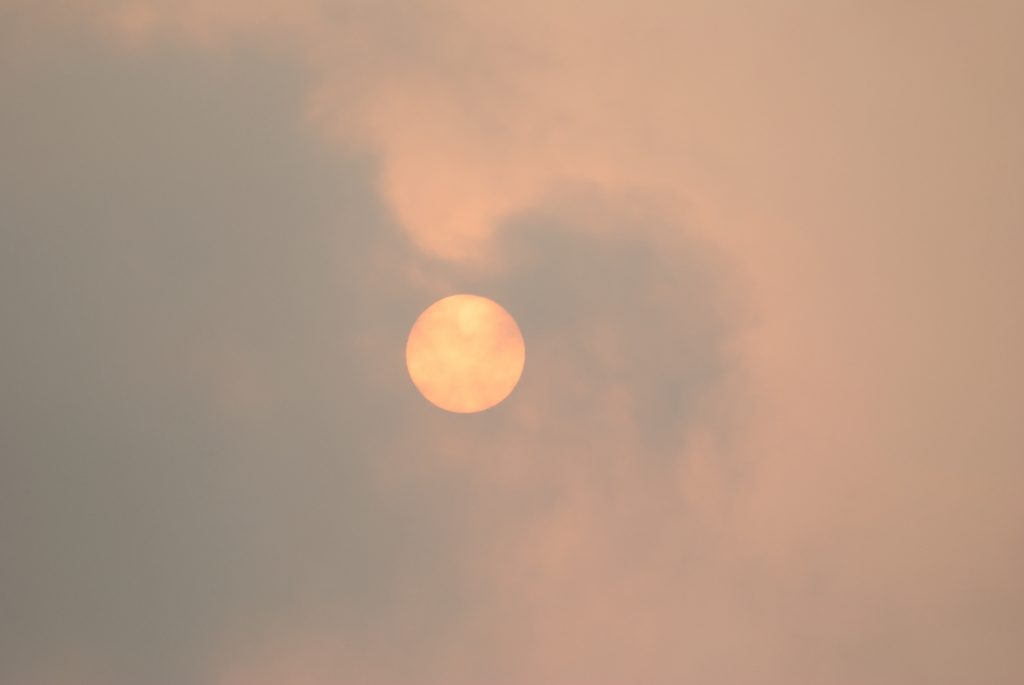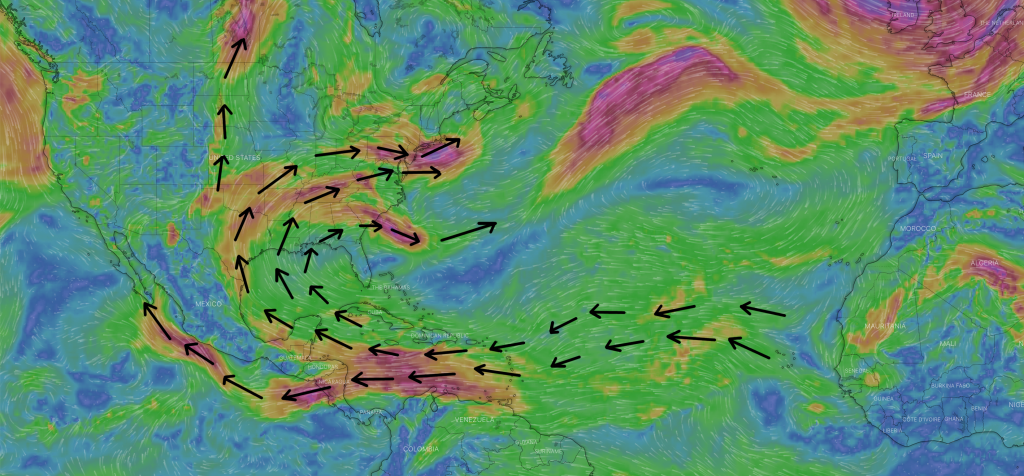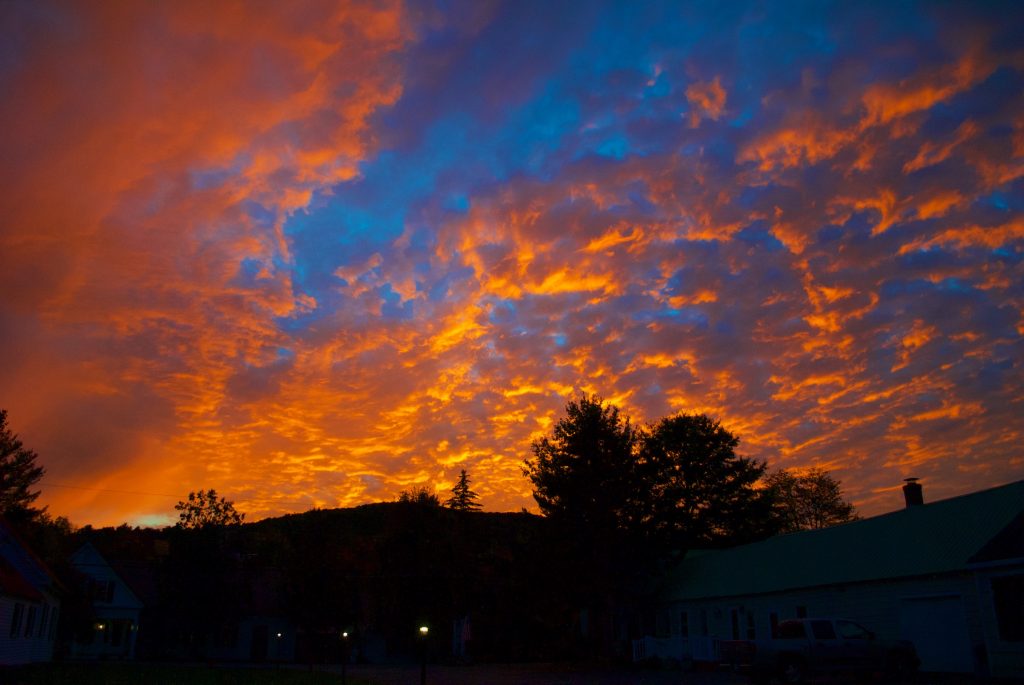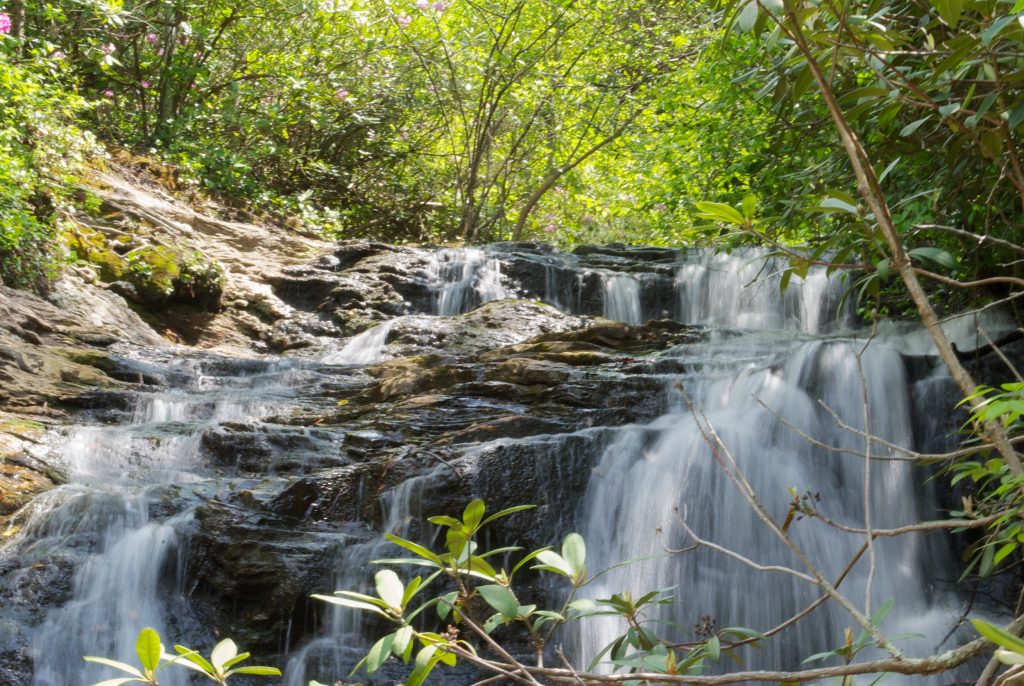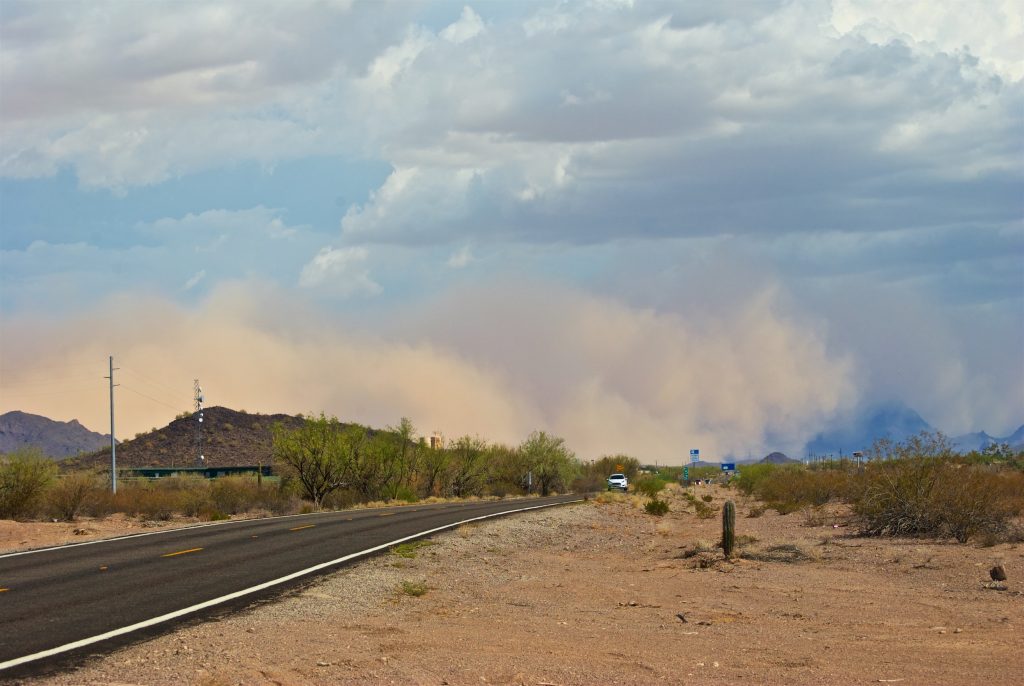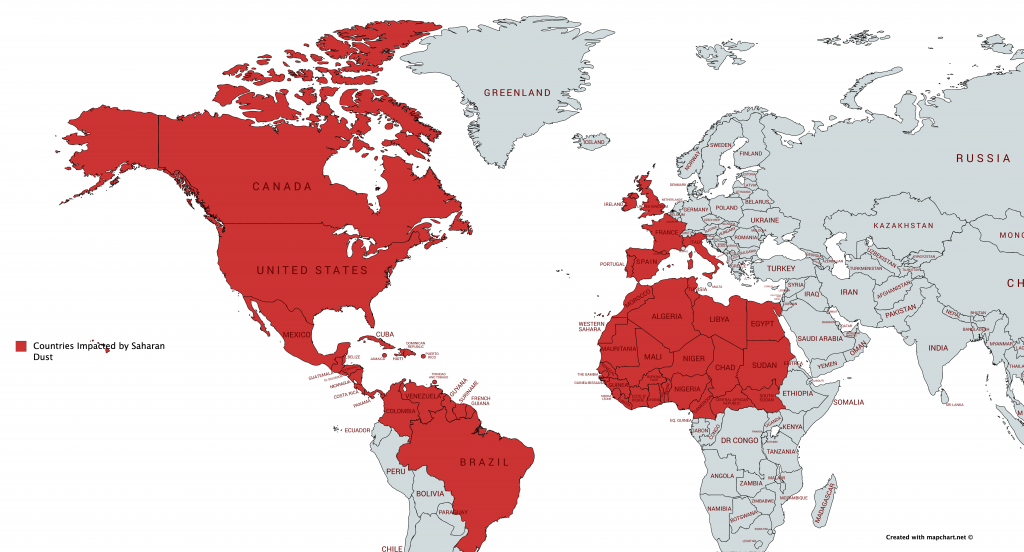Amidst the craziness of the pandemic, a giant Saharan dust plume has made its way across the Atlantic Ocean. It has started affecting the United States, as well as the rest of North America and the Caribbean. Today, we’re going to look at 13 facts about Saharan Sand Storms. We’ll also discuss how they can make it across the Atlantic and how the current storm will impact your day-to-day life.
1. Sahara Means “The Greatest Desert” in Arabic
The Sahara is appropriately named, as it is the largest hot desert in the world. It covers the northern third of Africa and is comparable in size to countries such as the United States, Canada, and China. Much of the desert is uninhabited. Rain is nearly non-existent, with the Sahara averaging about 20 millimeters (0.8 inches) of rain per year. Its residents live on the coast and on the far outer fringes of the desert. Sand temperatures over 80°C (176°F) have been recorded in the Sahara.
There are no roads across the Sahara, but a 4,500 km (2,800 mi) Trans-Saharan Highway that runs north/south from Algiers, Algeria to Lagos, Nigeria is in the works. A few brave people have successfully driven across the Sahara in a 4×4, but it is considered one of the most dangerous drives in the world.
2. Violent Sand Storms are a Routine Occurrence in the Sahara
The Sahara’s latitude aligns it nearly perfectly with the strong easterly trade winds that blow across the Atlantic. When violent sand storms are lifted by heating, convection, and turbulence that occur naturally over the desert, they cross paths with the trade winds. As a result, ejections of massive plumes of dust over the eastern Atlantic Ocean occur routinely. When the dust plume is large enough and the trade winds are strong enough, Saharan dust can reach North America, which is happening right now.
3. Geologists Can See Deposits of Saharan Dust in North American Soil that Dates Back Thousands of Years
While the levels of dust can vary wildly from year-to-year, dust events follow a fairly routine schedule. The presence of Saharan dust can be seen in the layers of soil samples taken in North America, South America, and the Caribbean, as well as sediment samples taken from the bottom of the Atlantic Ocean.
These studies give scientists a glimpse into not just geology, but also meteorology, climatology, oceanography, and human behavior thousands of years ago. The area right off the coast of Mauritania, Western Sahara, and Senegal is one of the most studied areas in the world for deposits of Saharan dust.
Do you want to know something else really cool these studies have uncovered?
4. Every 20,000 years, the Sahara Cycles Between a “Desert Sahara” and a “Green Sahara”
Every 20,000 years, there is a wobble in the Earth’s orbit. As a result, a dramatic shift in the tropical monsoon occurs over Central Africa. The next time this happens, the monsoon will shift dramatically to the north, dumping lots of rain across the Sahara Desert. As more rain falls, trees, shrubs, and other vegetation start to grow. Eventually, lakes and ponds form too. The Green Sahara can resemble anything from a tropical swamp like you’d see in the Florida Everglades to a dense jungle like you’d find in parts of South America or Southeast Asia to a lush savannah or grassland like the ones that are currently in Kenya or Tanzania.
Proof of the Green Sahara Starts with Saharan Dust
Now come on, there’s no way that just some dust deposits at the bottom of the ocean can prove this. You’re right that the dust alone doesn’t prove this. When combined with archaeological and anthropologic evidence found in the Sahara, it does. Every 20,000 years, there is a significant reduction in dust deposits as vegetation in the Green Sahara holds the soil and place, preventing the massive sand storms that are common across the Desert Sahara. In some of the most uninhabitable places of the current Sahara, archaeologists have found paintings depicting the Green Sahara, as well as fossils of both tropical jungle plants and marine life. Even mangrove fossils and whale fossils have been found in the middle of the Sahara.
When is the next shift of the Sahara?
So are we going to see the Green Sahara in our lifetimes? Unfortunately, no. The last change from Green Sahara to Desert Sahara occurred about 5,500 years ago, so there’s still about 15,000 years to go until the next Green Sahara starts. Even if the changeover were to start tomorrow, it usually takes between 100 and 200 years to transition between the Desert Sahara and the Green Sahara.
Before we shift back to the current Saharan Dust storm, here’s one more fun fact about the Green Sahara. The drying of the Sahara as it underwent its most recent shift from Green Sahara to Desert Sahara 5,500 years ago led to the rise of the Ancient Egyptian Civilization.
5. The Current Saharan Dust Storm is Suspended at an Elevation of Approximately 1.5 to 6 Kilometers (5,000 to 20,000 Feet)
In the Sahara, when strong winds whip up sand storms, strong heating, convection, and turbulence that occur naturally over the desert lift the dust and sand particles high into the atmosphere, reaching altitudes as high as about 6 km/20,000 feet. The lift from that heating and convection is so strong that the dust particles get up in the jet stream. The dust then rides the jet stream across the Atlantic.
I know what you’re wondering. Why doesn’t the dust just fall out of the sky? What keeps it suspended in the air? There are two possible scenarios.
- You can think of the atmosphere in terms of layers, just like layers in a cake. The jet stream is above the ground layer, and can be several layers above that ground layer. As the plume of dust moves west across the Atlantic, the ground layer often has a thermodynamic makeup that blocks particles from entering it from above and prevents dust particles from settling back down.
- If you look at a vertical profile of the atmosphere, you will find areas of lift and areas of subsidence. Strong jet stream winds encourage lifting in the atmosphere, which keeps the dust particles suspended aloft, much like raindrops in a cloud.
Gravity will eventually win this battle. Once the dust gets blown into weaker upper-level winds or out of the jet stream completely, it will begin to settle.
6. The Current Saharan Dust Storm Will Primarily Impact the Eastern United States
The southeastern United States, as well as Puerto Rico and the Virgin Islands will see its greatest effects. The main effect you’ll see is just a thick haze. If you’ve ever been near a wildfire, it will look very similar to that, just without the smoky smell.
The latest weather observations show very strong trade winds blowing from east to west across the Caribbean. A high pressure system sits just off the east coast of Florida, which will pull the dust north through the Gulf of Mexico. Not surprisingly, the states seeing the greatest impacts of the dust include Texas, Louisiana, Mississippi, Alabama, and Florida.
Models show the dust plume will continue north across the Mississippi River valley. It will then shift east, impacting much of the central and eastern United States. The high pressure off the coast of Florida will slowly shift to the east over the next couple of days. At that point, it will pull the dust back into Florida. Ironically, the US state closest to the Sahara, Maine, will likely the least impact, at least among the eastern states.
Now, what does that mean for those of us who live west of the Great Plains? There is a strong wind blowing across Central America and up the west coast of Mexico. Miniscule amounts of Saharan dust may reach the far southern parts of California, Arizona, and New Mexico. Any effects will be so minimal that you will barely notice.
7. You May Notice Adverse Health Effects, Especially in the Southeastern US, Puerto Rico, and the Virgin Islands
If you’re experiencing symptoms similar to allergies or a very mild cold, such as sneezing, coughing, runny nose, scratchy throat, or itchy eyes, the dust is likely at least partly responsible for it. Even if you’re not allergic to anything in it, the dust is still an irritant that can cause these symptoms. When I am exposed to excessive amounts of desert dust here in Arizona, I tend to sneeze a lot and get scratchy throats.
If you are sensitive to low air quality, there are a few things you can do to limit your exposure:
- Close your windows and doors and stay indoors
- If your air conditioning has a recirculate mode, use it
- Avoid being outdoors for extended periods
- The masks you wear to stop the spread of COVID-19 will help reduce irritation from the dust. N95 respirators will filter out the dust particles, but the regular cloth masks are better than nothing.
8. The Dust Will Produce Spectacular Sunrises and Sunsets
Light refracting through particles suspended in the air equals beautiful colors at sunrise and sunset. That’s just simple physics.
9. The Saharan Dust Will Temporarily Pause the Atlantic Hurricane Season
Many people think that the dust somehow interferes with the sunlight or the heating necessary to form hurricanes. That is incorrect. When the Sahara ejects dust plumes over the Atlantic, it also ejects very dry desert air along with it. The dust plume stays in that pocket of very dry air as it makes its journey across the Atlantic.
When the dust gets to the Caribbean, the very dry air that it is traveling in is strong enough to cut off the moisture supply that tropical cyclones require in order to form. Extremely dry air, such as that found in deserts, is impressively difficult to re-humidify, so once the dust leaves the area, it will take several days for moisture to return to its normal levels.
Further inland, you will also see the same effect. The only difference is that the dust will be shutting off rain and thunderstorms, not hurricanes.
10. It is Full of Nutrients that Allow Plant Life and Agriculture to Flourish
Saharan dust is so much more than “just dust”. In fact, Saharan dust is a type of mineral dust that is extremely rich in nutrients such as iron and phosphorus, which fertilizes and gives life to some of the lushest forests on the planet. In the Amazon rainforest alone, the Sahara deposits over 22,000 tons of dust every year, making it almost solely responsible for keeping the Amazon’s ecosystem so healthy and lush. Because the Amazon gets so much rain, if it weren’t for the Saharan dust, the Amazon’s nutrients would wash away very rapidly.
Saharan dust deposits in the ocean are a bit more of a mixed bag. While they deliver the same benefits they bring to ecosystems on land, the mineral-rich dust can also be a breeding ground for algae blooms and red tides, which can release toxins and deplete the ocean of oxygen, resulting in mass death of ocean creatures. I experienced several red tides back when I lived in the Tampa Bay area of Florida. Trust me, they are not pleasant to be near.
11. The Current Saharan Dust Storm in North America is Not a Haboob
You have probably heard the word “haboob” thrown around as massive dust storms barrel across the deserts of the American Southwest during the summer monsoons. The Saharan dust plume is not a haboob. Let me explain.
Do you know the saying that all squares are rectangles, but not all rectangles are squares? The same analogy applies here. All haboobs are dust storms, but not all dust storms are haboobs. So what exactly is a haboob?
A haboob is a specific type of intense dust storm that is carried on a weather front. In North America, they are almost exclusively found on gust fronts and outflow boundaries as monsoon thunderstorms collapse. They are a routine occurrence in the deserts of the southwestern United States and northern Mexico during the summer monsoon. The word “haboob” is an official meteorological term that means “blasting” or “drifting” in Arabic.
How exactly does the Saharan dust storm differ from a haboob? Let’s have a look.
| Saharan Dust Storm | Haboob |
| Suspended aloft between 1.5 and 6 km (5,000 to 20,000 ft) altitude | Moves at ground level; normally less than 1 km/0.6 mi tall |
| Propelled by trade winds and low-level jet stream | Propelled by weather fronts and outflow boundaries |
| Leading edge 2,500 km / 1,600 mi long | Leading edge less than 100 km / 60 mi long |
| Has travelled over 8,000 km / 5,000 mi from the west coast of Africa to the US Gulf Coast | Typically travels less than 200 km / 125 mi |
| Will take about a week to 10 days for the dust to travel from the west coast of Africa to the US Gulf Coast | Rarely lasts longer than 2 or 3 hours |
12. Does It Affect the COVID-19 Pandemic?
Not in a major way. The dust plume will not be in one specific location long enough nor be severe enough to have any significant impacts on the pandemic. You may see a very slight uptick in hospitalizations for a day or two. The Saharan dust will have little to no effect on case counts or death counts.
If you’re currently ill with COVID-19, a cold, or any other respiratory illness, the dust plume may exacerbate your symptoms for a day or two. Staying inside with the doors and windows closed will help mitigate that exacerbation.
13. The Saharan Dust Storm is Impacting Many More Countries than just the United States
The current Saharan dust storm will likely impact over 50 countries by the time it’s all said and done. In the map below, countries shaded in red will see effects of the Saharan dust. It wouldn’t surprise me one bit if the dust finds its way into to additional countries. Nations in Central America and the Caribbean, as well as the southeastern United States will see the greatest effects of the dust.
If you have any questions about this unique event, please leave them in the comments. I’ll answer them as soon as I can.
Until next time.
Top Photo: One of the largest haboobs in Arizona history near Gila Bend, Arizona – July, 2018
